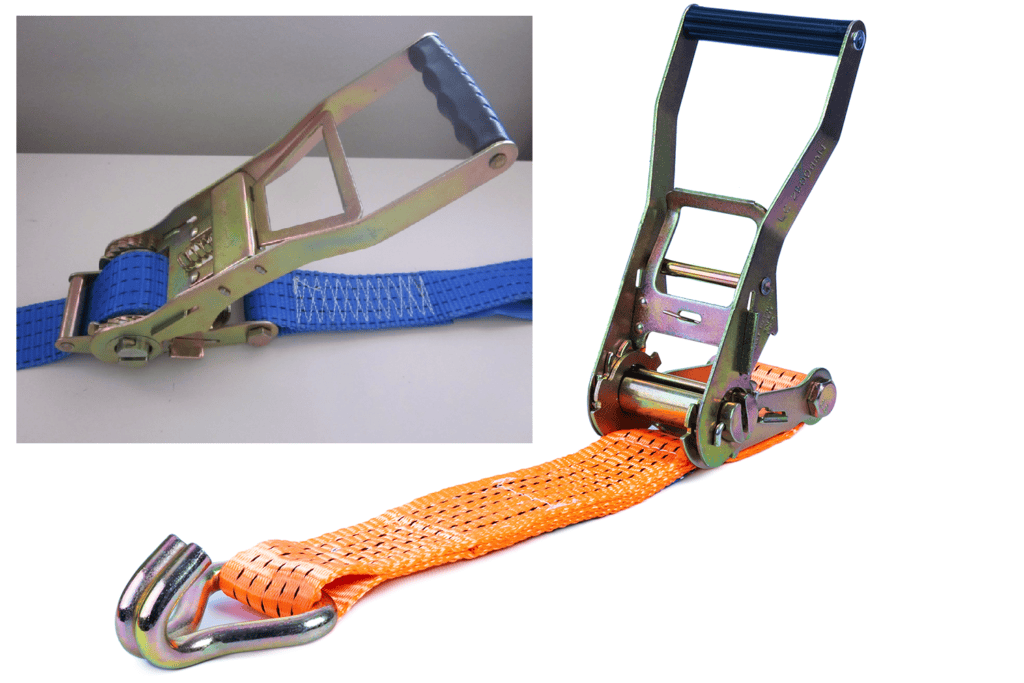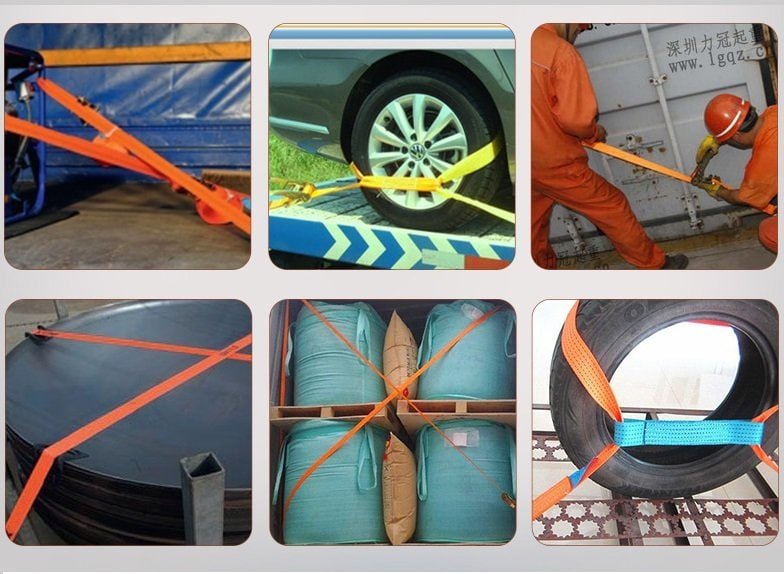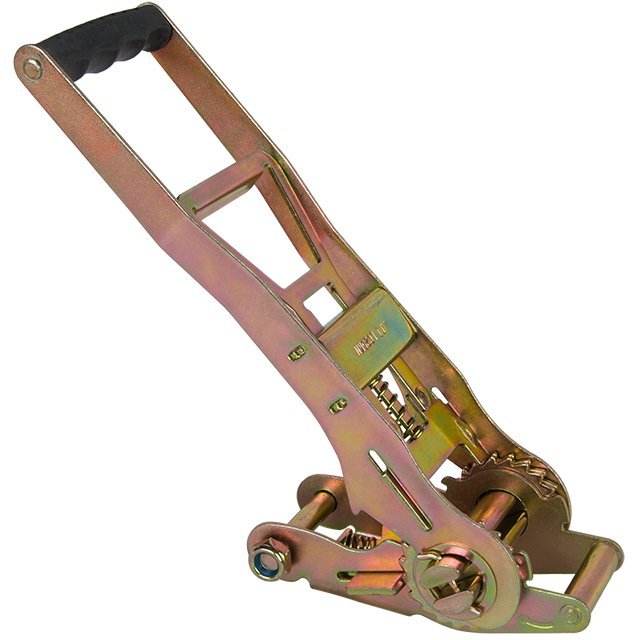Introduction
In logistics, product packaging, and even outdoor activities, the role of tie-down straps is crucial. They ensure the safety of goods, reducing the risk of damage during transportation. In the market, ergo-type ratchet tie-down straps and regular tie-down straps are two widely used options. This article will provide an exhaustive comparison of these two types of tie-down straps to help you make the best decision for your needs.

Usage Scenarios and Efficiency

When choosing tie-down straps, considering the nature of the items to be bound is the primary factor. Ergo-type tie-down straps are better suited for scenarios requiring high binding force or for heavier loads due to their special locking mechanism. Their ratchet design allows for some degree of delf-lock, reducing the likelihood of slipping and increasing safety. Conversely, if your application scenario involves general lightweight packaging, then regular tie-down straps may be more suitable, as they can provide the necessary safety assurance at a more economical price point.
Technical Specifications and Performance
For technical specifications, we will focus on four dimensions: material, load-bearing capacity, size, and buckle type.
- Material: Both types often use the same material, polyester. However, performance might differ due to weaving techniques and material processing methods.
- Load-bearing capacity: Due to the special buckle design, ergo-type ratchet tie-down straps generally offer a higher degree of load-bearing capacity and safety factor.
- Size: Although the size ranges are similar, ergo ratchet tie-down straps typically offer more fine-tuned length adjustments, advantageous for goods of varying sizes.
- Buckle Type: The most significant difference is the type of buckle. The self-lock function of ergo ratchet straps can reduce operation errors and loosening possibilities.

User Experience
User experience covers ease of operation, durability, and comfort. Ergo ratchet tie-down straps excel in stability due to their ratchet mechanism, especially for securing heavy objects. However, this also means a more complex release mechanism requiring some degree of skill from the user. In contrast, the standard buckles of regular tie-down straps are easier to operate and release.
Price and Cost-Effectiveness
Price and cost-effectiveness should also be considered. Generally, ergo ratchet tie-down straps are more expensive due to their complex locking mechanism. However, the extra cost is justified in scenarios requiring additional safety assurance. In comparison, regular tie-down straps are more attractive cost-wise, especially when purchased in bulk or used for low-risk applications.
Safety
Last, but equally important, safety is a must-consider when choosing ergo-type tie-down straps. Heavy loads and high-risk application scenarios demand more reliable tie-down straps, which is exactly what ergo tie-down straps are designed for. Regular tie-down straps are applicable for standard safety requirements, providing a suitable solution for everyday packaging.
Conclusion
After understanding the differences between ergo and regular tie-down straps, you should be able to make a wise choice based on your needs. If your focus is on safety and stability, ergo ratchet tie-down straps are undoubtedly the ideal choice; If your focus is on cost-effectiveness and versatility, regular tie-down straps might be a more economical and practical option. We hope this article provides the guidance you need in practice.
If you have any questions, feel free to leave a comment. We are happy to provide further assistance.